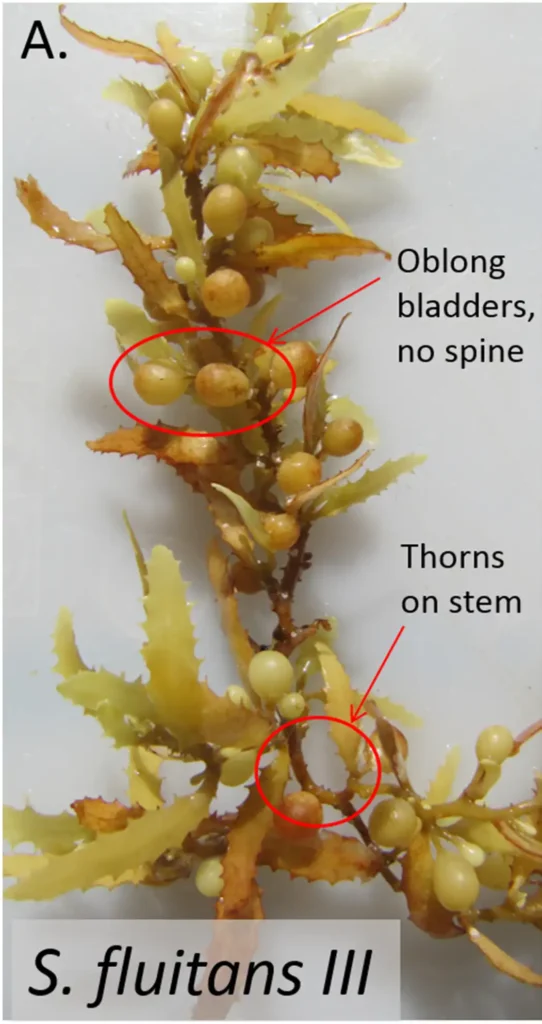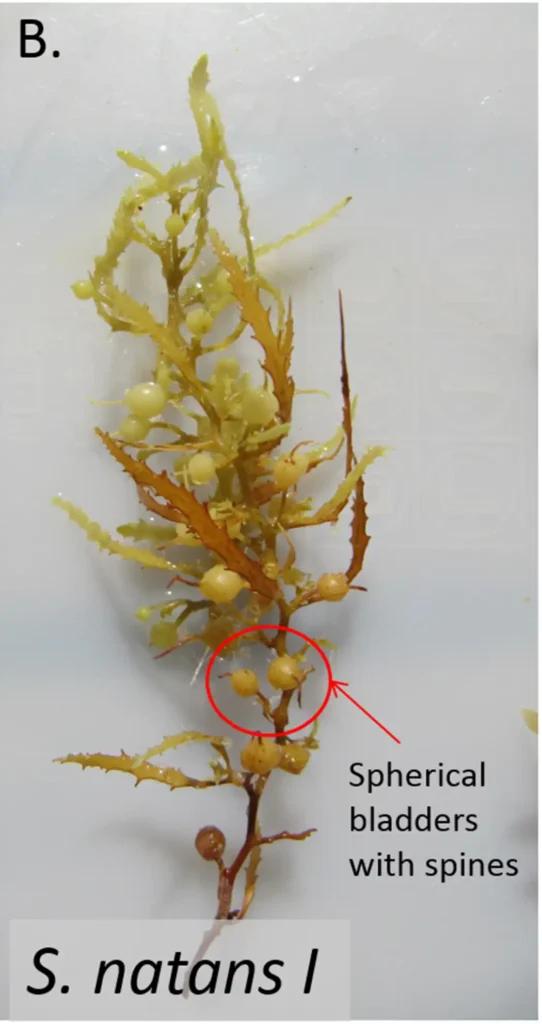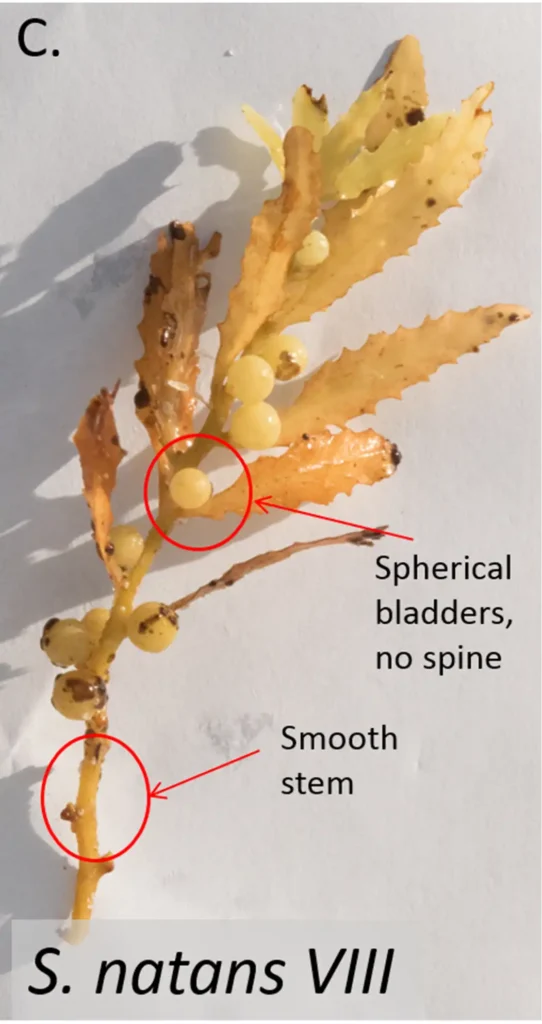Know the Sargassum Seaweed
There are dozens of Sargassum algae. Thanks to the Sargassum citizen science network, scientists and researchers have been able to highlight the three models that are invading the Caribbean.
Under optimal conditions, they can double in volume in a week !
Sargassum fluitans have thorny stems whereas, Sargassum natans have smooth stems. Bladder and blade attributes differ widely among forms. (A) For Sargassum fluitans III, thorns on stem are present, blades are wide, bladders are devoid of spines, and bladders are oblong. (B) For Sargassum natans I, stem is smooth, blades are narrow, spines are present on bladders, and bladders are spherical (C) For Sargassum natans VIII (photo credit: Janet Bering), stem is smooth, blades are wide, bladders are devoid of spines, and bladders are spherical.



The sargassum invasion, an ecological, health and economic disaster !
Sargassum seaweed evolution from 2003 to 2020

Animated picture: Jouanno & al. (2025)
Ecological…
Thick mats block photosynthesis and consume oxygen in the water by smothering fauna, flora and coral. Sea turtles have difficulty reaching spawning grounds. Juveniles die before reaching the sea. Some countries are considering classification: natural disaster !
Economic …
The white sand disappears, the turquoise sea turns brown, a putrid smell invades the area for several kilometres. The tourism industry is suffering significant losses. The corrosive gases emitted damage electronics and household appliances. Sargassum removal costs millions of Dollars per year !
Sanitary…
The analyzes confirm, among other things, the presence of arsenic, cadnium and heavy metals captured during their journey, as well as Chlordecone if the sargassum has traveled along Martinique and Guadeloupe. As they decompose, algae produce two dangerous gases: hydrogen sulphide (H2S) and ammonia (NH3), with consequences for human and animal health, such as coughing, irritation or even headaches and respiratory problems. Risk of pre-eclampsia in pregnant women.
Conclusion
A first conclusion was obvious: to prevent the Sargassum from dying on the shore, we must prevent these algae from washing up on the beach by stopping them in the sea. We still need to know where they will end up. Until then, the only detection tools were satellite images, difficult to interpret because of the cloud masses and the waves, it was necessary to create a monitoring network allowing to see the real state of the coast at the moment “T”.
This is why Sargassum Monitoring® ensures constant monitoring, 365 days a year.
